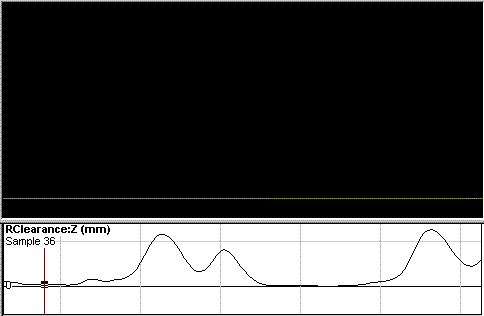 Teach-in
'99 : Toe Clearance
Teach-in
'99 : Toe Clearance
by Chris Kirtley, The Hong
Kong Polytechnic University
During swing phase, the foot is lifted then swings through, making
an arc centred at the knee. One important consequence of this is that during
mid-swing the height of the foot is at a minimum, as shown in this animation
(made using Vicon BodyBuilder modelling software). The height of
the right toe from the floor is less than 20 mm at its minimum. In fact,
David Winter has reported it as being, on average, 13 mm for young adults
and only 11 mm for the elderly*.

At this point in the gait cycle, the toe is at great risk of striking
a small obstacle, which may cause a stumble and fall. Reduced clearance may be therefore one
important cause of falls in older people, which are associated with a large number of fractured
femurs and other serious morbidity. Considering the potentially
disastrous consequences of a fall, one wonders why the body has evolved
such a dangerously small clearance. This is especially surprising when
one considers that in stone-age times, the terrain over which our ancestors
walked must have been very rough, with many obstacles to trip over.
*Winter, DA (1991) The biomechanics & motor control of human gait:
normal, elderly & pathological (2nd. ed.), Univ. of Waterloo Press,
Waterloo, Ont.., p. 9.
 Questions
Questions

-
Why is clearance so small in normal gait?
-
Was man's clearance always so small (e.g. in stone-age times)?
-
If so, why did we evolve a lower clearance?
-
What is the clearance in other animals (e.g. quadrapods,
birds)?
-
What are the main contributors to the amount of clearance
which is achieved?
-
hip flexion?
-
knee flexion?
-
ankle dorsiflexion?
-
Why does clearance become even smaller in the elderly?
Email your answers to [n/a] 
 What
we said on the CGA list
What
we said on the CGA list
 Back to Teach-in page
Back to Teach-in page

 Teach-in
'99 : Toe Clearance
Teach-in
'99 : Toe Clearance

![]() Back to Teach-in page
Back to Teach-in page